WINDSHIELD REMOVAL AND INSTALLATION (INSTRUCTIONS)

WINDSHIELD REMOVAL AND INSTALLATION PROCEDURE
VEHICLES AFFECTED 1985-88 'C' MODELS; 1986-88 'H' MODELS -----------------
The following procedure should be followed when replacing windshields on 1985-88 'C' Models and 1986-88 'H' Models:
1. Place protective coverings on vehicle to prevent damage to paint or interior.
2. Using a utility knife, make a cut into existing urethane sealant around entire perimeter of glass. Cut as close to edge of glass as possible.
3. Using a cutout knife or piano wire, cut out glass keeping tool as close to bottom surface of glass as possible. Remove glass.
4. Using a utility knife, remove major portion of old urethane sealant from pinchweld. Trim remaining urethane to a 3mm uniform layer, avoiding any loose pieces or voids (See Figure 1).
5. Check opening for uneven sheet metal and/or spot weld burrs. Rework as required to eliminate disruptive surfaces.
6. As required, prime and paint areas of exposed sheet metal, per paint manufacturer's instructions.
NOTICE: DO NOT APPLY ANY PRIMER OR COLOR OVER URETHANE. DO APPLY BLACK PRIMER WHICH COMES WITH URETHANE INSTALLATION KIT, ON FRESHLY PAINTED SURFACE WHICH WILL COME IN CONTACT WITH URETHANE.
7. Locate spacers in opening as shown - Figure 2 - Spacer, Part Number 20603560. To install spacer, trim urethane at spacer location to the sheet metal, cement spacer on sheet metal parallel to edge of flange.
8. Position windshield glass into opening. Align for uniform fit to roof and windshield pillars.
Mark position by applying masking tape to windshield and body. Cut tape at edge of glass and body. This will provide a means to align windshield into body during installation (See Figure 3).
Utilizing a business card or similar item, run the card between the windshield and the windshield pillar garnish molding to check for clearance along the entire windshield pillar length.
2. Remove windshield from body and prep as follows, utilizing primers contained in the Urethane Repair Kit No. 993110:
a. Clean windshield with general glass cleaner.
b. Apply clear primer glass prep #1 to entire perimeter of glass edge inboard approximately 12mm. Wipe primer off with a clean, dry rag.
c. Apply black glass prep #2 primer directly over clear primer area.
10. Apply insulation strip, Part No. 20674325, along lower inboard edge of glass so as to allow 12-15mm of glass clearance (Figure 4) from edge of glass to bottom edge of insulation strip.
11. Trim urethane dispense tip as shown (See Figure 5).
12. Apply urethane bead to glass, ensuring a bead size of 5-7mm wide by 8- 10mm high (See Figure 5).
13. Position glass in opening onto spacers aligning masking tape on glass and roof, then lightly press glass in place to wet urethane to opening.
14. Except where push-in molding will be inserted, paddle excess urethane around glass. Do not undercut bead (See Figure 6).
15. If necessary, add additional urethane between glass and body to fill any voids.
16. Remove protective coverings from body.
17. Install "push-in" type reveal moldings (if used).
18. If reveal moldings won't stay in proper position at upper corners, use cloth waterproof tape, to hold them in position until adhesive is cured.
19. Water test using a spray. Use warm water if available. Do not direct hard stream of water at uncured urethane. If any leaks are found, add extra urethane at leak point. NOTICE: WATER APPLIED ON TOP OF URETHANE, EITHER DURING WATER TEST OR AS A SEPARATE OPERATION, WILL SPEED UP CURE OF URETHANE.
20. Install all remaining moldings.
21. NOTICE: VEHICLE MUST BE KEPT AT A MINIMUM OF 65 DEGREES F. FOR 6 HOURS TO ALLOW MATERIAL TO CURE.
22. Remove tape (if used).
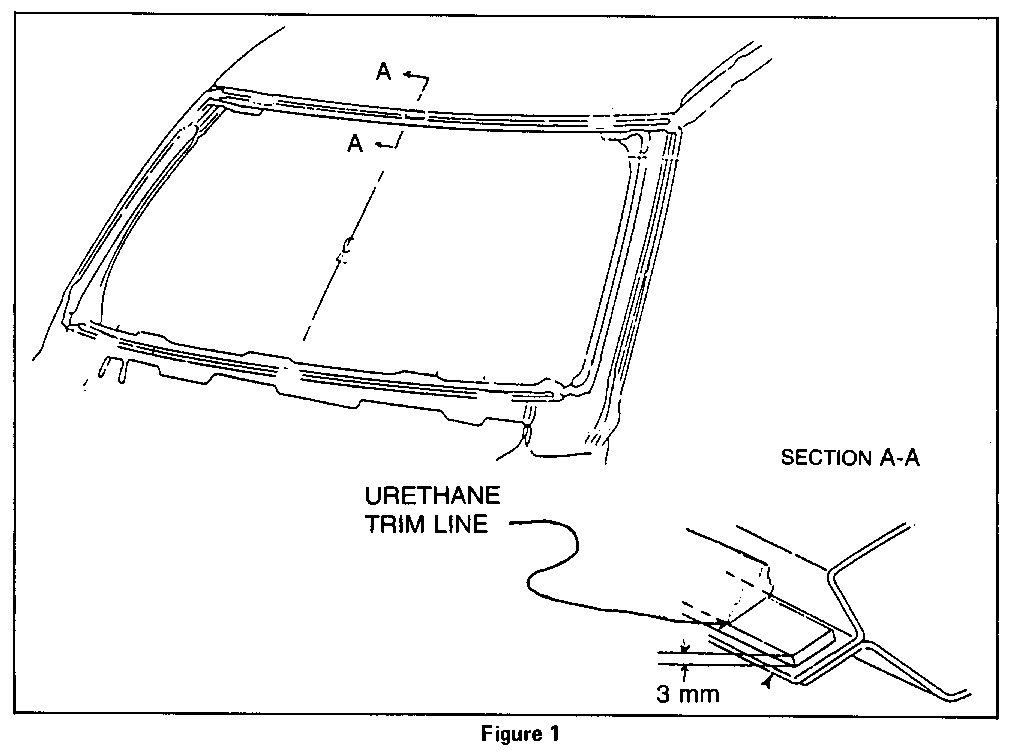
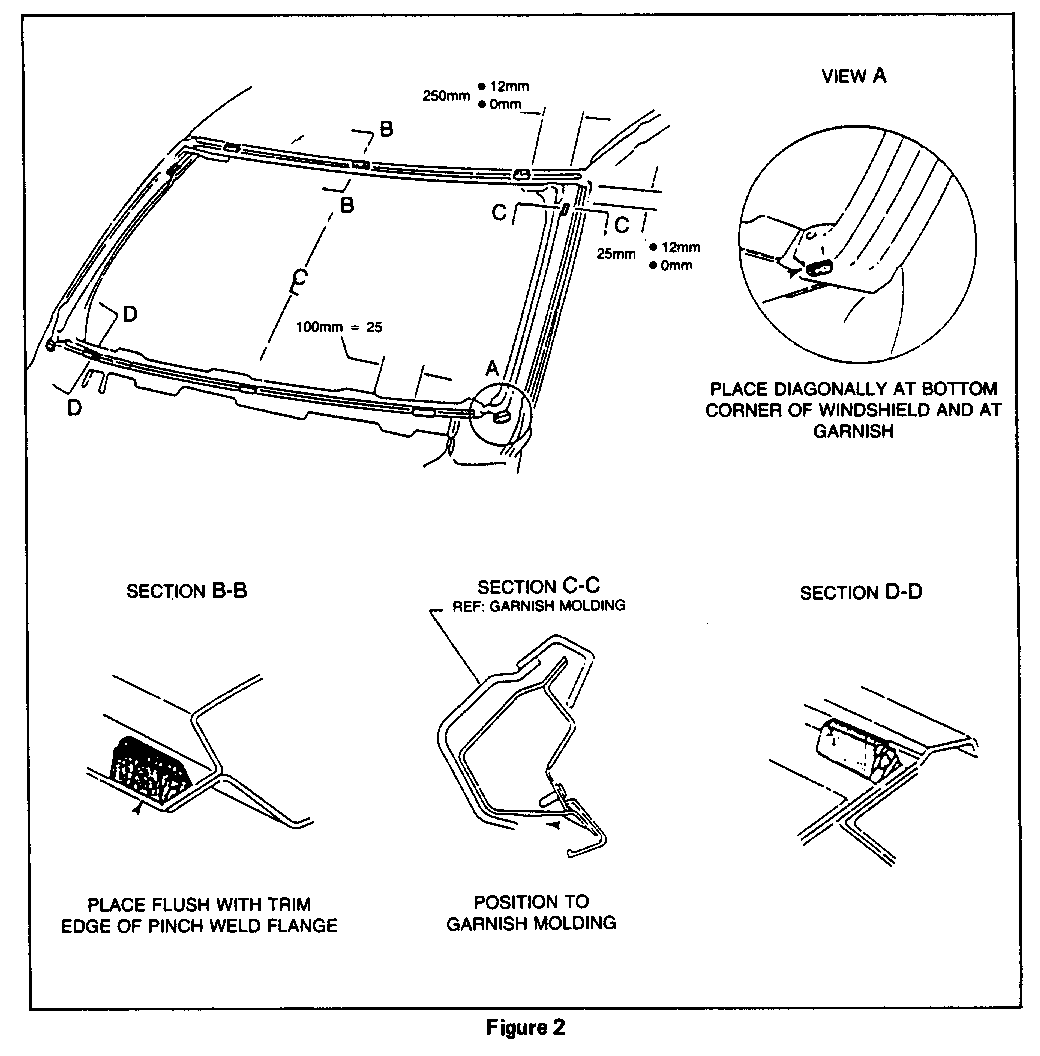
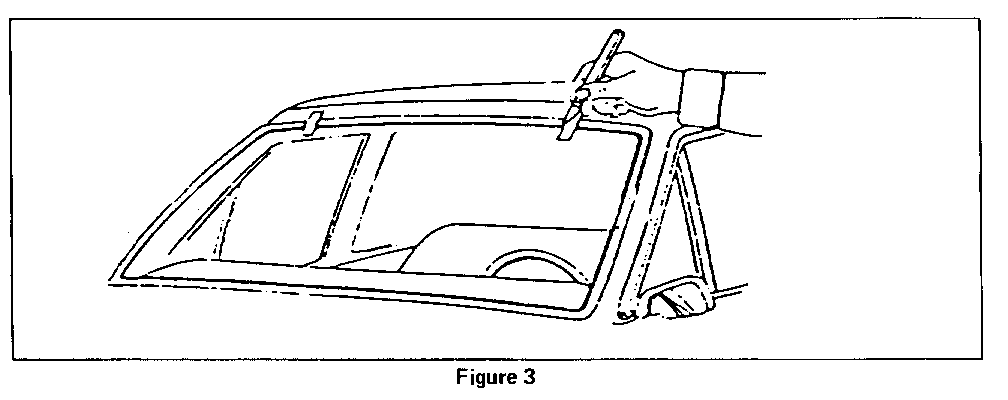
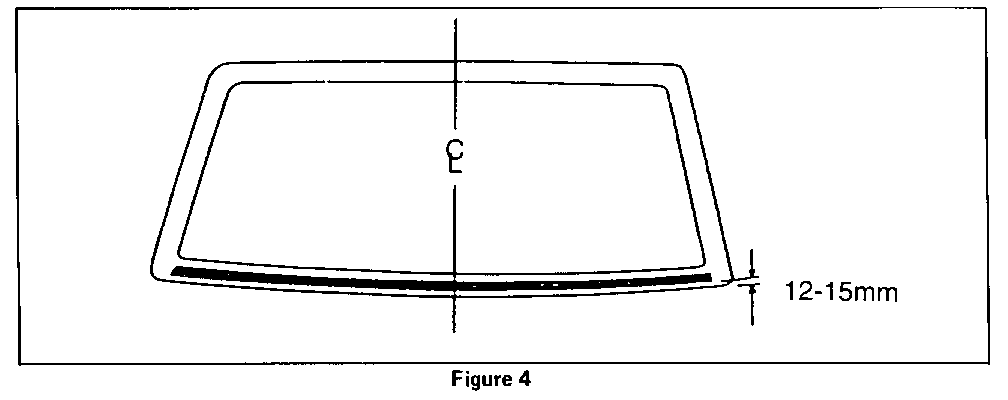
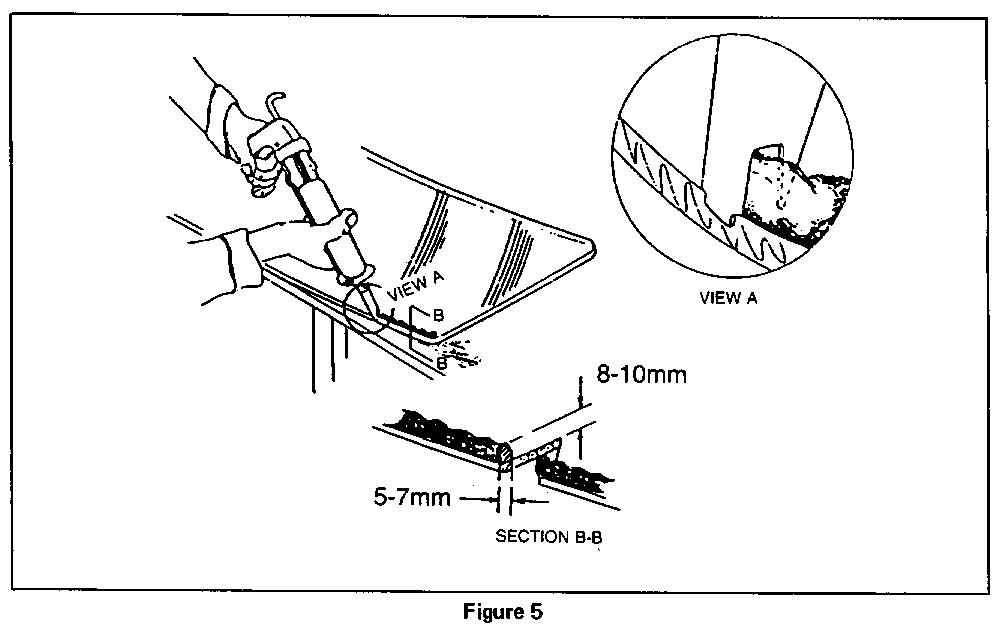
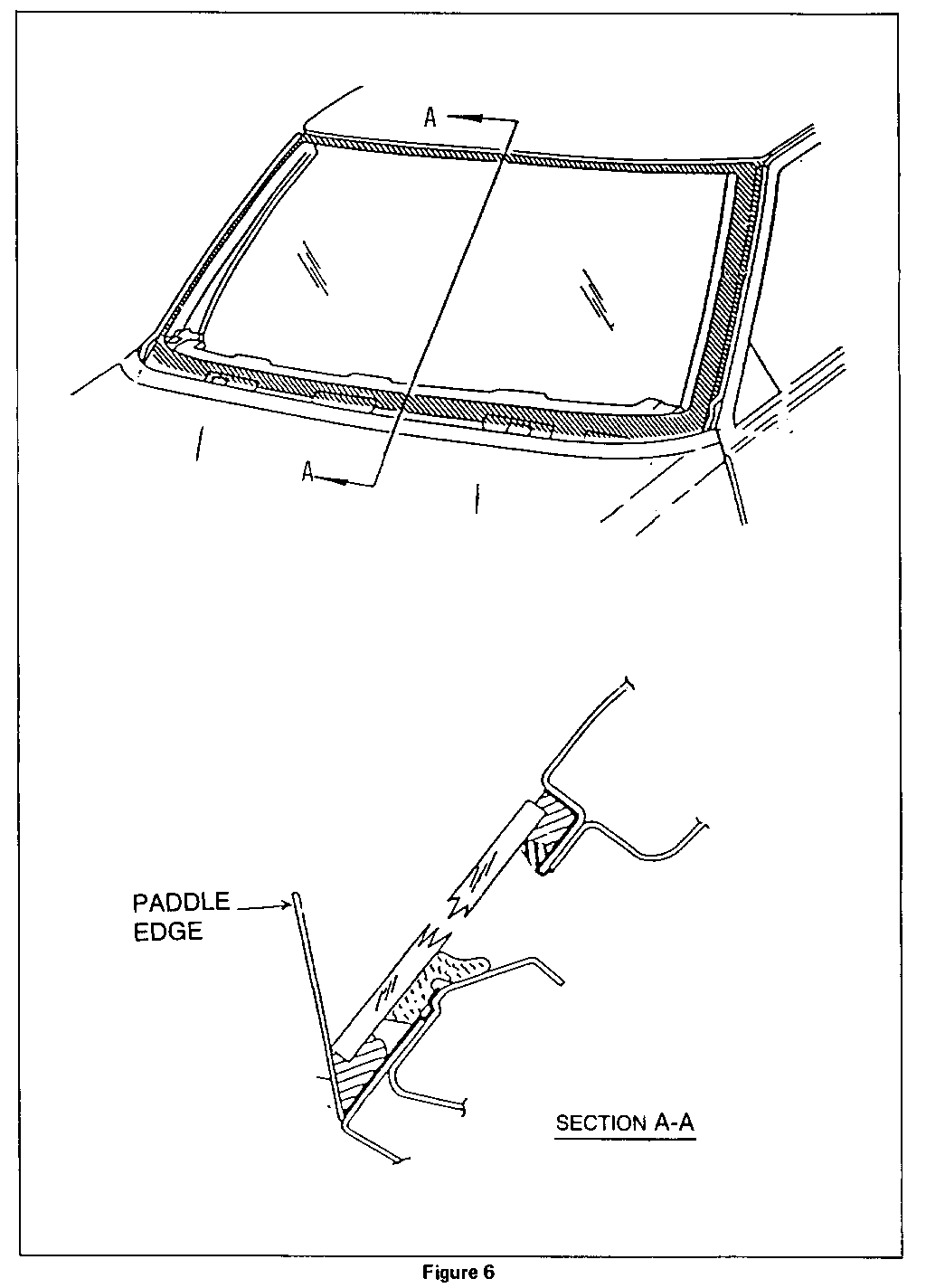
General Motors bulletins are intended for use by professional technicians, not a "do-it-yourselfer". They are written to inform those technicians of conditions that may occur on some vehicles, or to provide information that could assist in the proper service of a vehicle. Properly trained technicians have the equipment, tools, safety instructions and know-how to do a job properly and safely. If a condition is described, do not assume that the bulletin applies to your vehicle, or that your vehicle will have that condition. See a General Motors dealer servicing your brand of General Motors vehicle for information on whether your vehicle may benefit from the information.
